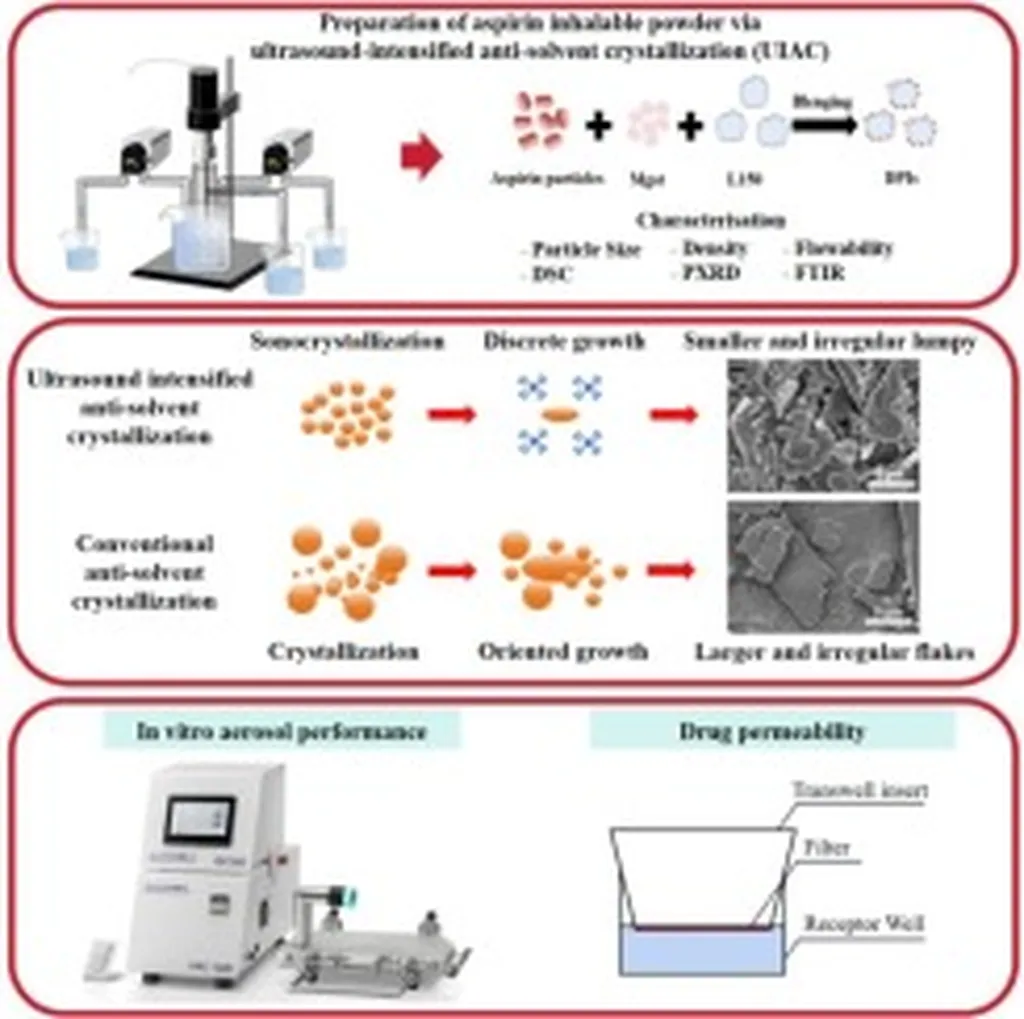In a groundbreaking development poised to revolutionize drug delivery systems, researchers have successfully prepared aspirin inhalable powder using an innovative technique known as ultrasound-intensified anti-solvent crystallization (UIAC). This novel approach, detailed in a study published in the journal *Ultrasonics Sonochemistry* (which translates to *Ultrasonics and Sonochemistry* in English), opens new avenues for rapid and efficient pulmonary drug delivery, potentially transforming the way we administer certain medications.
Led by Yan Zhao from The First Affiliated Hospital of Nanjing Medical University and the Department of Pharmaceutical Engineering at China Pharmaceutical University, the research team set out to address the challenges associated with traditional aspirin administration. “Aspirin is widely used for its antiplatelet properties, but oral administration can lead to gastrointestinal irritation and delayed absorption,” explains Zhao. “By developing an inhalable powder form, we aimed to enhance its efficacy and reduce side effects.”
The study systematically evaluated the particle size distribution, morphology, density, fluidity, and in vitro aerodynamic performance of the prepared powders. The team discovered that adding excipients L150 and L-leucine significantly improved powder flowability and increased the fine particle fraction (FPF) from 10.40% to an impressive 45.86%. This enhancement is crucial for ensuring that the drug reaches the deep lungs, where it can be rapidly absorbed into the bloodstream.
To optimize the production process, the researchers employed machine learning methodologies, specifically the Decision Tree Regressor and Shapley Value analysis. This approach allowed them to elucidate the influence of critical process parameters, ensuring a more efficient and precise manufacturing process.
The potential commercial impacts of this research are substantial, particularly in the pharmaceutical and healthcare sectors. Pulmonary drug delivery offers a non-invasive and rapid alternative to traditional oral administration, which could lead to faster relief and improved patient compliance. “This technology could be a game-changer for drugs that require quick absorption and have a narrow therapeutic window,” says Zhao.
Moreover, the study demonstrated that the aspirin inhalable powder had no significant toxic effects at the cellular level, and its high permeability in lung epithelial tissue was confirmed using a Calu-3 cell monolayer. Pharmacokinetic studies in healthy rats revealed that pulmonary delivery accelerated absorption and increased the bioavailability of aspirin, with a Tmax of just 10 minutes compared to 30 minutes for oral administration. The area under the curve (AUC) was also 1.91 times higher, indicating a more efficient drug delivery method.
As the world continues to seek innovative solutions for drug delivery, this research paves the way for future developments in pulmonary administration. The combination of ultrasound-intensified anti-solvent crystallization and machine learning techniques offers a promising approach to optimizing drug formulations and improving patient outcomes. With further refinement and commercialization, this technology could become a cornerstone of modern pharmaceutical practices, benefiting patients and healthcare providers alike.

